Digital Camera World Verdict
This brick-like, plastic build trail camera offers a decent straight-out-of-the-blocks option for those looking to get started with surveillance-type observation at a value-added cost. A degree of trial and error and hit-and-miss results are inevitable, but arguably this is part of the fun of such a gadget. Budget extra for a memory card and the six AA batteries required for powering the device.
Pros
- +
Affordable entry point into trail cameras
- +
Solid construction
- +
Weather resistant
Cons
- -
No 4K recording
- -
Batteries required are additional expense
Why you can trust Digital Camera World
Trail cameras are becoming ever more popular. Unsurprising perhaps, as, once placed in a surreptitious position, they allow us to observe the wider world and the more skittish of creatures remotely from the comfort of our own home.
For those looking for a fairly priced route into the trail camera world, the Bushnell Prime L20 Tan Low Glow model looks to be an enticing option. Newcomers should think of it as a surveillance camera with extras, able to begin recording to a removable SD card – with the capability here of utilizing cards up to 32GB – when its built-in sensor detects movement in the vicinity.
Inevitably, with the trail camera set up, fixed in position at a location, and then left to operate independently and automatically, the operation becomes more a case of ‘point and hope’ than point and shoot. While a degree of trial and error is inevitable, it also leaves room for happy accidents and us being pleasantly surprised too. So, what are the nuts and bolts we’re being presented with here, and how does it perform?
Bushnell Prime L20 Tan Low Glow: Key Features
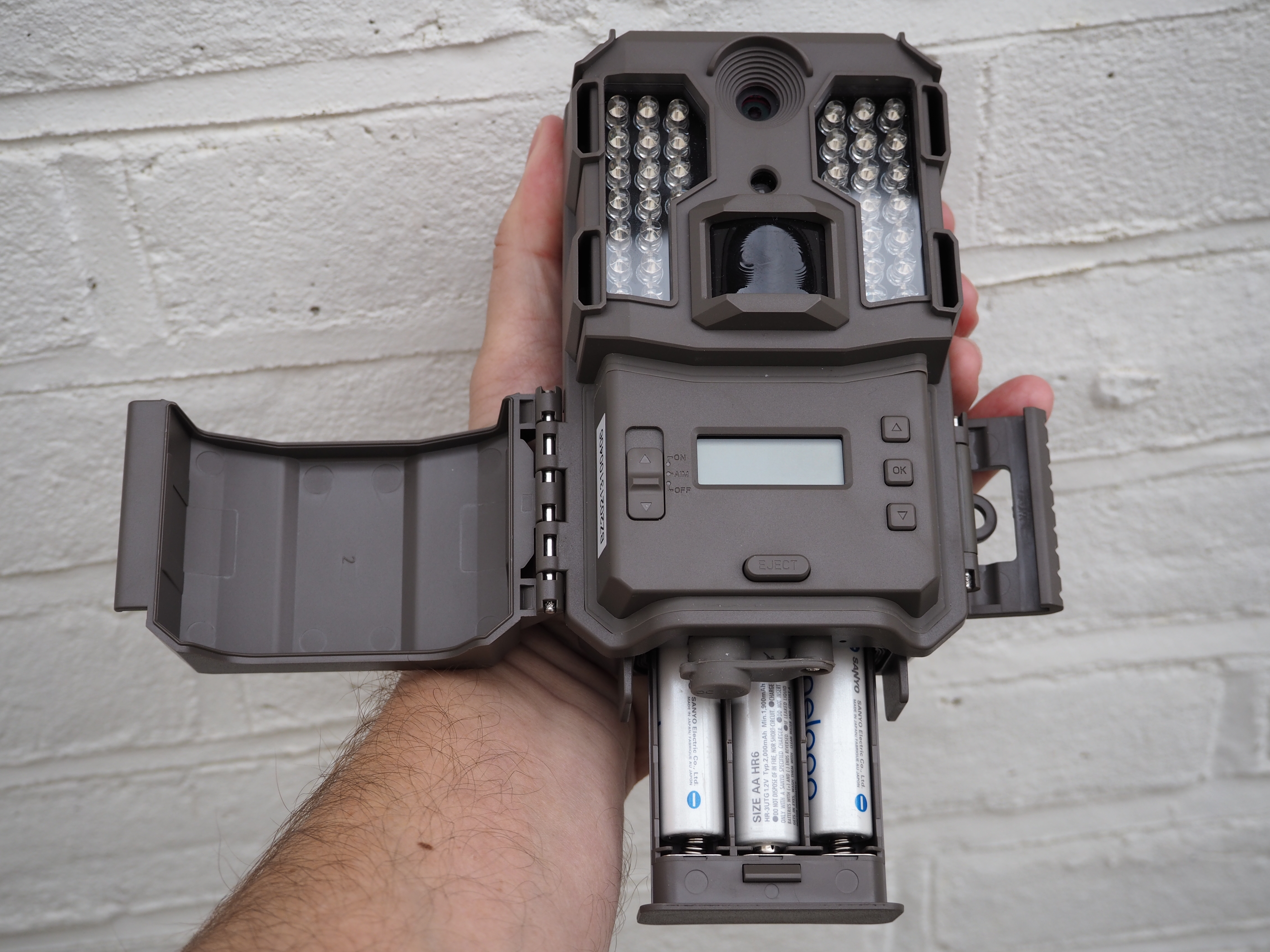
Though Bushnell is best known for binoculars, the Bushnell Prime L20 Tan Low Glow model is one of a number of ‘trail cam’ options produced by the manufacturer. Apart from an impressive array of LEDs on its fascia, the Bushnell Prime L20 Tan Low Glow trail camera, fashioned from what looks like a single plastic mould, looks pretty bare bones at the outset. It sports a single-color khaki plastic exterior rather than any of the camouflage detailing sometimes found on models higher up the Bushnell range. That said, at roughly the size and weight of a house brick with batteries and card inserted, the unit is still fairly obtrusive if hidden and surrounded by natural foliage.
One thing our review unit arrived missing was any strap via which to bind it to a tree trunk, branch or any other static vantage point, though a couple of hard plastic lugs are provided at the back for threading one through. A screw thread is alternatively provided at the base for a tripod attachment should we be keen to keep our horizons level, and are able to do so without drawing attention to the trail cam. That said, thanks to a flat base to the device, it can be propped up on its own.
Core features of any trail camera include the maximum range at which it is able to function, which for this particular model is around 80ft at night. Packed into its faceplate are 36 visible LEDs, which, with the lens and sensor located dead center, enable both Full HD 1080P resolution video recording at 30fps, plus a choice of either 3MP, 12MP, or full 20MP resolution still images.
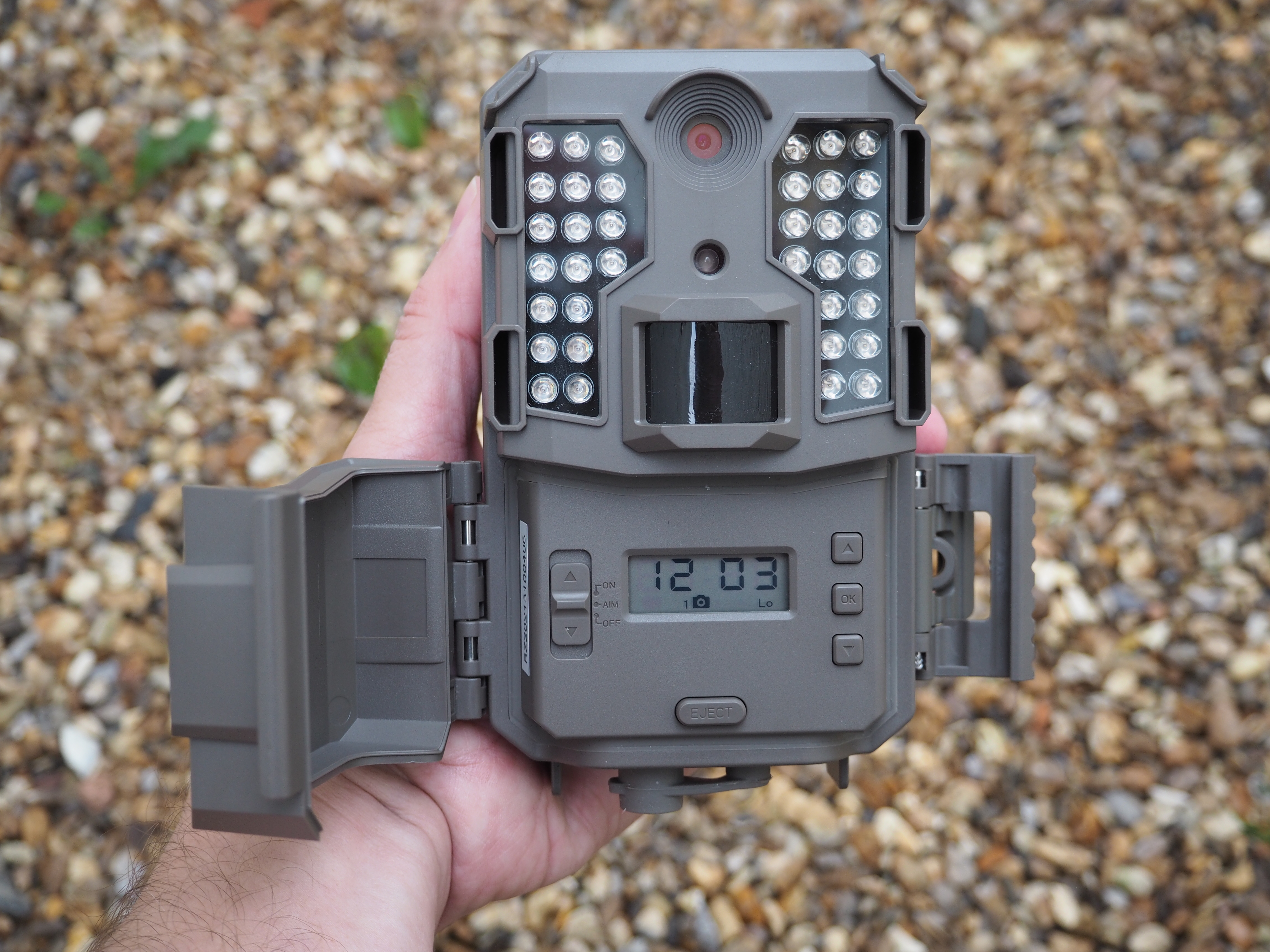
Obviously, we want any camera we’re going to be leaving out in the wet and the wild to be waterproof, so fortunately the Bushnell Prime L20 Tan Low Glow trail camera offers IPX6 levels of water tightness to protect it against rainfall.
A pop-out tray at the base of the unit snugly houses the six AA batteries that power the Bushnell, with a narrow LCD screen, operational buttons, and a vacant slot for the insertion of an SD card provided just above it. When the trail camera is in operation, these are hidden beneath a hard plastic cover that is clamped into place to prevent settings from being accidentally disturbed once implemented. Build quality feels sufficiently robust to withstand the odd careless knock or drop and, impressively, Bushnell claims that a set of batteries can last up to 12 months of use. Said power cells are an additional expense, obviously, as none arrived in the box with our review unit.
Interestingly, as concerns power, the instructions that come with the unit state that a solar panel accessory is another optional purchase for this model, which attaches via the DC-in jack, protected by a tethered rubber cover, at the base of the unit.
Bushnell Prime L20 Tan Low Glow: Rivals
While obviously core features such as resolution, range and functionality differ, there are a bunch of competing devices that serve the exact same function as the Bushnell Prime L20 Tan Low Glow trail camera. For example, there’s its bigger brother in the 32MP Bushnell Core DS-4K No Glow trail camera, which distinguishes itself by featuring a class-leading 4K video resolution, a relatively speedy 0.15-second trigger response, as opposed to the 0.7-second trigger response here, plus twin sensors variously optimized for use in both day and night.
Options from rival manufacturers include the likes of the Spypoint Force 20, which offers a slightly lower specification, including a 70ft detection range, 1080x720 pixels video clips, plus yet again the option for shooting to a removable SD card at up to 32GB capacity. Similarly specified also to the Bushnell Prime L20 Low Glow trail camera, thanks to its 24MP stills resolution and 1080P video at 30fs, is the GardePro E6 No Glow trail camera. This one ups the ante further by coming with its own phone app for remote operation and being Wi-Fi and Bluetooth enabled, which is fine as long as we’re planning to remain within range of the device itself – hiding in the conservatory perhaps while we place the unit in the garden.
For the money though, it feels like the Bushnell Prime L20 Tan Low Glow trail camera still holds its own amidst rivals.
Bushnell Prime L20 Tan Low Glow: Handling
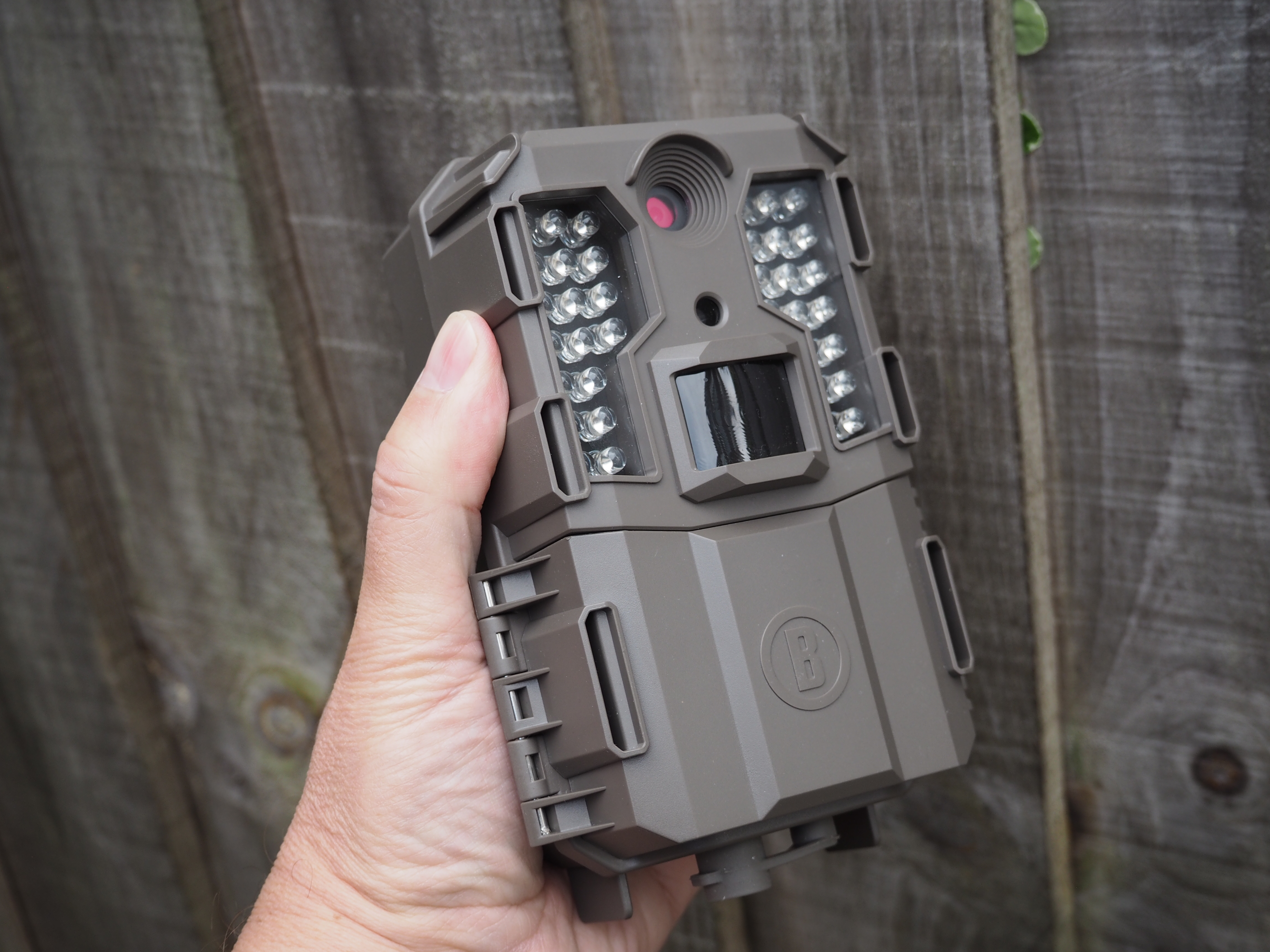
The hard plastic exterior of the Bushnell Prime L20 Tan Low Glow trail camera has no noticeable give to it when squeezed in the palm and the build quality seems good and firm. We mentioned earlier about a tray for inserting 6x AA batteries being inserted within the unit’s baseplate and, just above, we also get a rudimentary selection of controls being ranged either side of a narrow slit-sized LCD window, that allows for the tabbing through of operational settings and choices, but not for the review or playback of any images.
As we’ve noted, it’s a case of placing this one in position and hoping for the best, rather than trying to achieve accurate or artistic framing. While some competitors allow the entire inner camera module to be retrieved from the trail camera’s outer casing, here that element is fixed in place. So we have to flip open the front each time we want to retrieve our regular 32GB SD card and any recordings with it. It makes sense then to load as high a capacity up to that 32GB as possible to avoid having to swap cards in or out.
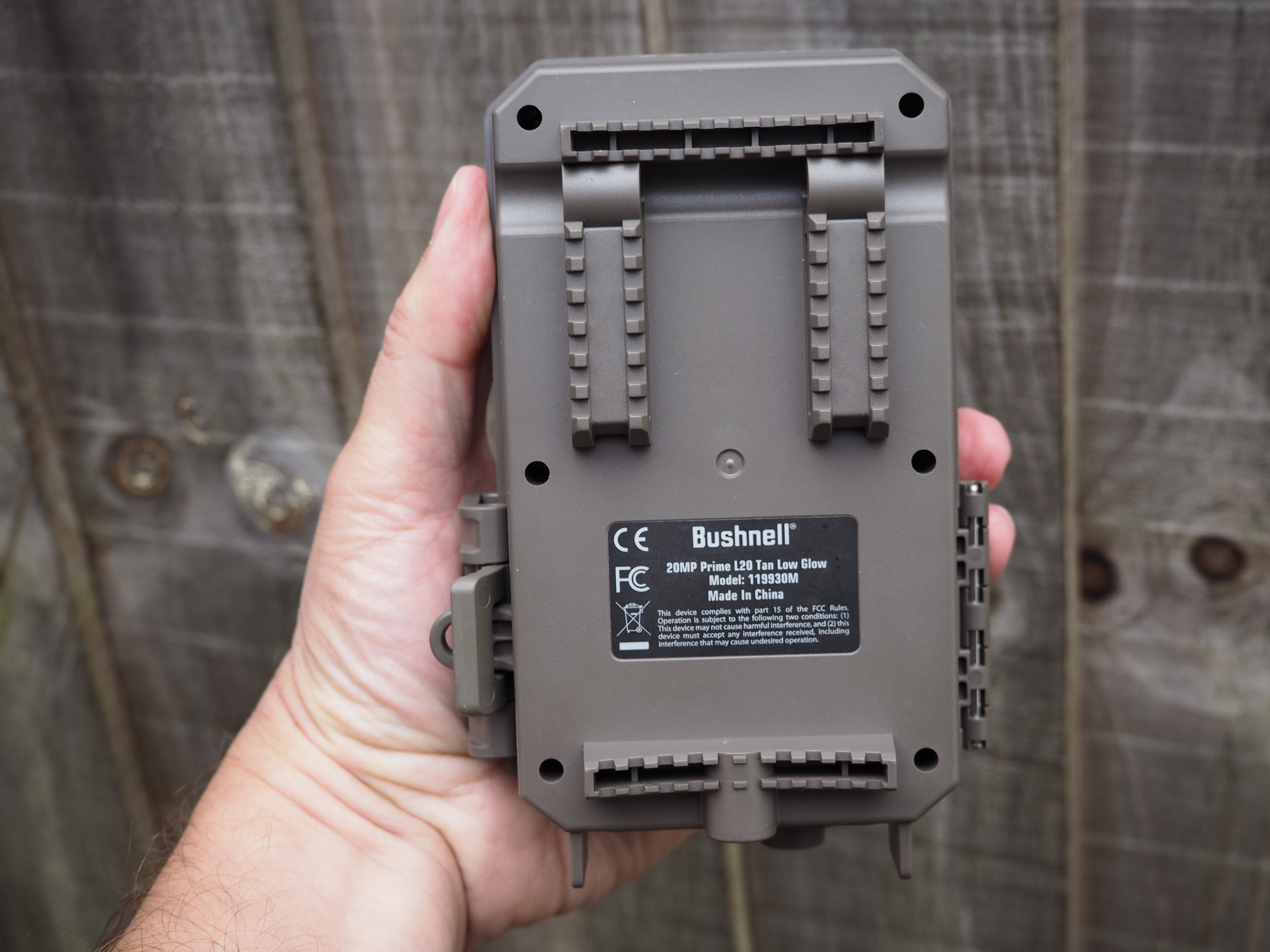
Bushnell Prime L20 Tan Low Glow: Performance
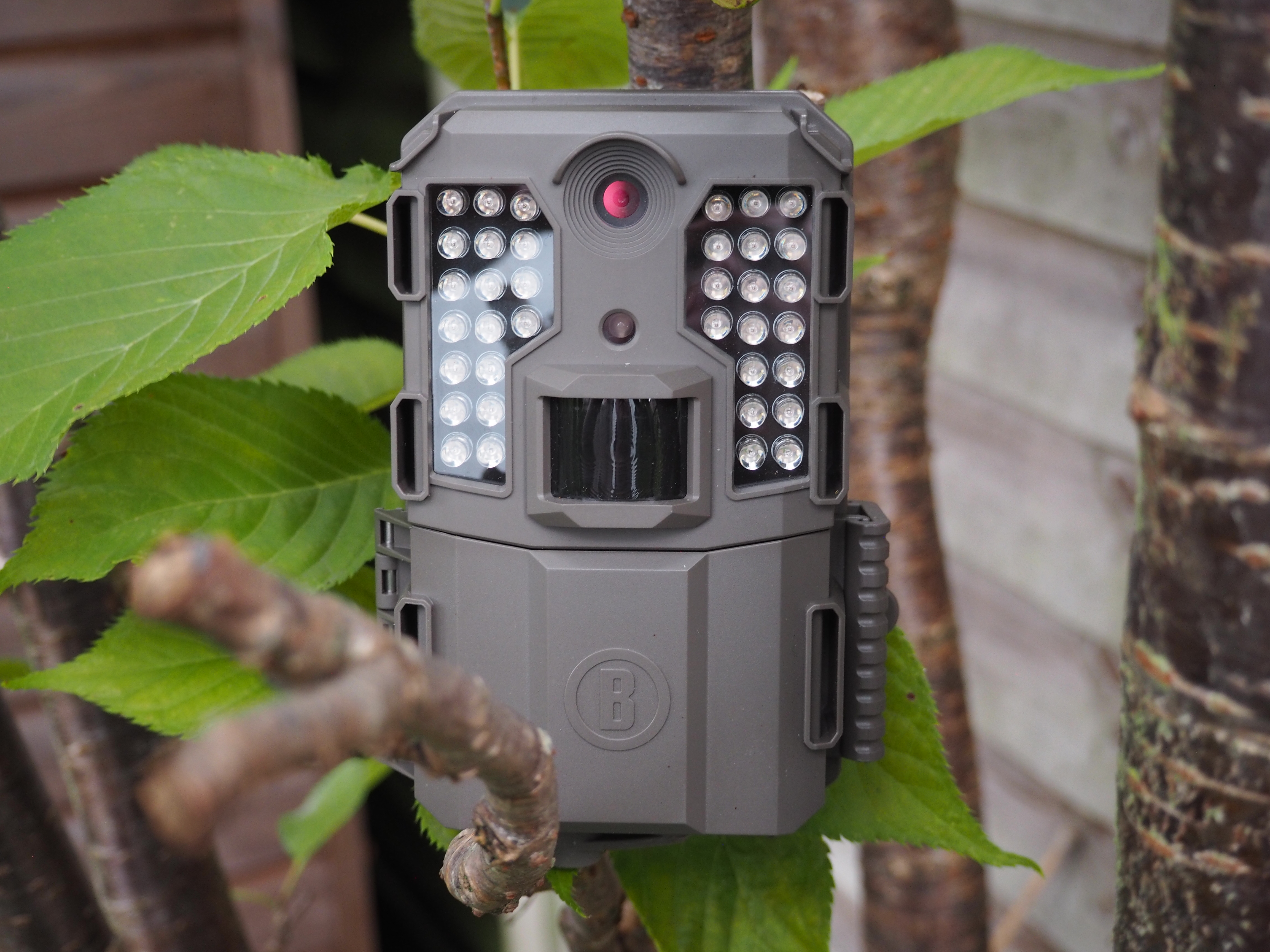
Selecting the ‘Aim’ mode on the three-setting slider switch alongside the narrow LCD screen allows for the camera to be set up, although the choices here are not extensive. In fact, it’s fair to say the on-screen menu is rudimentary, the selections required to get going from scratch involve setting up the camera with time and the date – favoring the US convention only of the month first, day second, and year third – and selecting the shooting of stills or video.
Despite, or perhaps because of, the minimalism of the digital watch style controls, setting up the camera requires an initial read through the hard copy manual, then scrolling through and okaying of the limited options presented to us. Once the camera is switched to ‘On’ mode, which means it’s ready to start operating in earnest, there is a brief 10-second delay period during which we can quickly shut the camera cover and retreat from wherever we’ve set the Bushnell Prime L20 Tan Low Glow trail camera up, and thereby avoid accidentally triggering its recording.
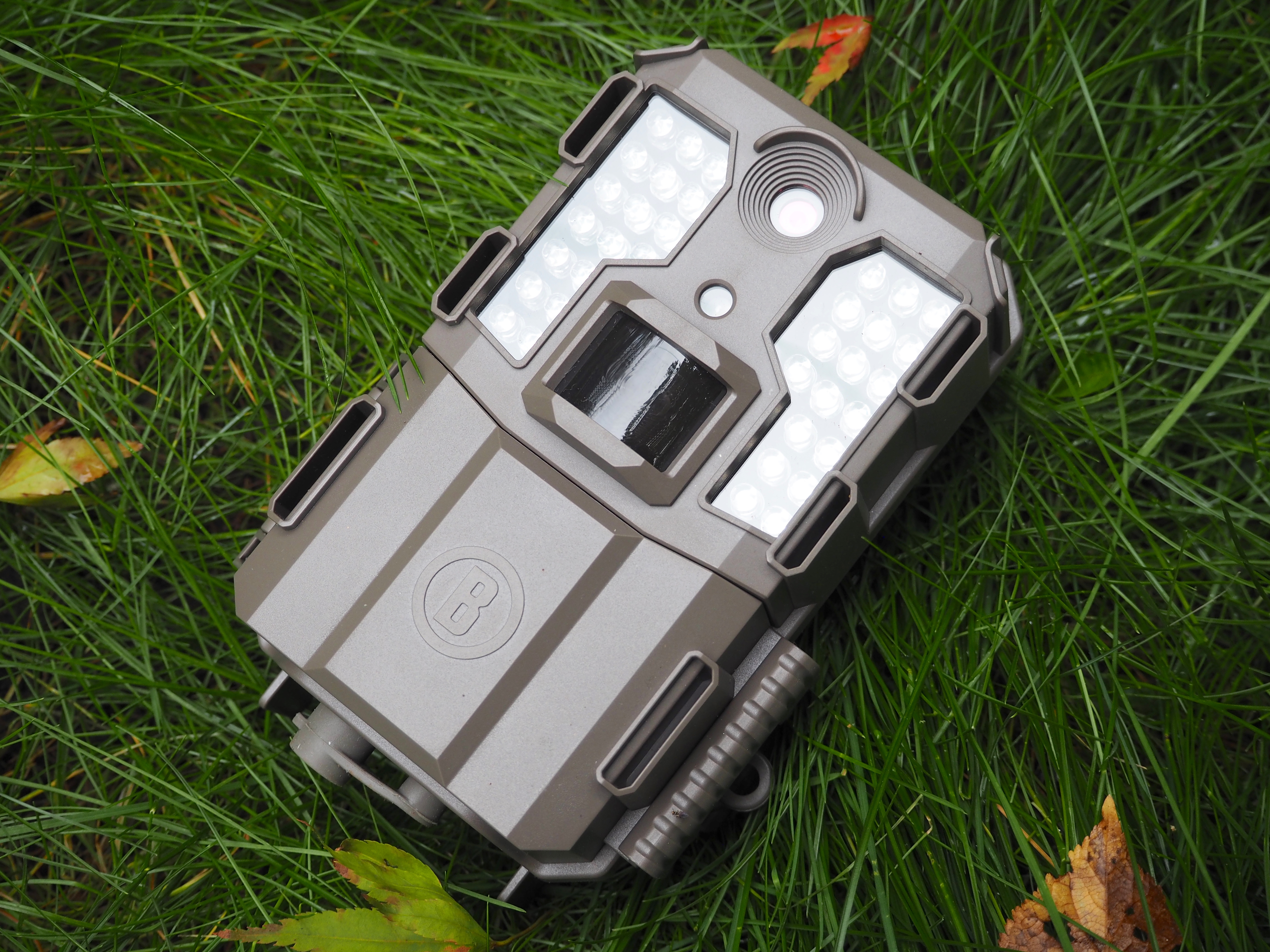
Ten seconds is not long to fully get away from the setup position, however; so expect to get a few frames of yourself retreating into the distance included when retrieving the SD card later. The Resultant 4:3 ratio digital images come with a white border along the bottom helpfully displaying the date and time of capture along with the external temperature. While at the time of testing the camera detected a fairly balmy 23°C when we placed it outside in the early evening, we do wonder whether performance is affected by temperatures dropping, as the general rule of thumb is that cold batteries lose their efficiency. Happily, we left the camera in place overnight, a 12-hour period during which the Bushnell recorded temperatures had dropped to 7°C, and found it was still fully operational at 7am the next morning, even though the internal batteries were cold to the touch.
In terms of end results, it’s worth pointing out that nighttime images are captured in black and white – think of slightly grainy surveillance footage we’re all used to seeing on TV – while daytime images are recorded in full colour, also with a slightly grainy look. Overall we’re getting imagery resembling a VHS video grab. Recall the look of the original ‘Blair Witch Project’ movie and you won’t be far off.
Here it’s about actually capturing an image of something we wouldn’t otherwise be able to record, rather than achieving a crystal clear DSLR quality result that we’ll want to hang on our wall.
Bushnell Prime L20 Tan Low Glow: Verdict
Like any trail camera, the remotely activated Bushnell Prime L20 Tan Low Glow involves a degree of trial and error ‘point and pray’, as regards both operation and results, but arguably that’s part of the fun and a large part of the appeal of devices such as this.
Built for use in the great outdoors, obviously, the unit is sufficiently water resistant to withstand rain and comes with the added peace of mind of a two-year warranty. For those looking to capture surveillance-type imagery while they’re tucked up in bed or without actually having to be in the vicinity, this budget-priced Bushnell option is worthy of recommendation.
You might also like the best cellular trail cameras, and if you're into wildlife, the best portable hides for photography and the best camera for wildlife.
Gavin has over 30 years’ experience of writing about photography and television. He is currently the editor of British Photographic Industry News, and previously served as editor of Which Digital Camera and deputy editor of Total Digital Photography.
He has also written for a wide range of publications including T3, BBC Focus, Empire, NME, Radio Times, MacWorld, Computer Active, What Digital Camera and the Rough Guide books.
With his wealth of knowledge, Gavin is well placed to recognize great camera deals and recommend the best products in Digital Camera World’s buying guides. He also writes on a number of specialist subjects including binoculars and monoculars, spotting scopes, microscopes, trail cameras, action cameras, body cameras, filters and cameras straps.


